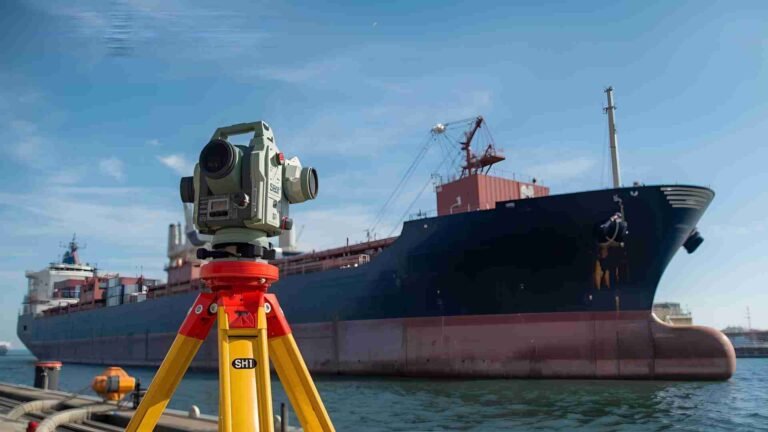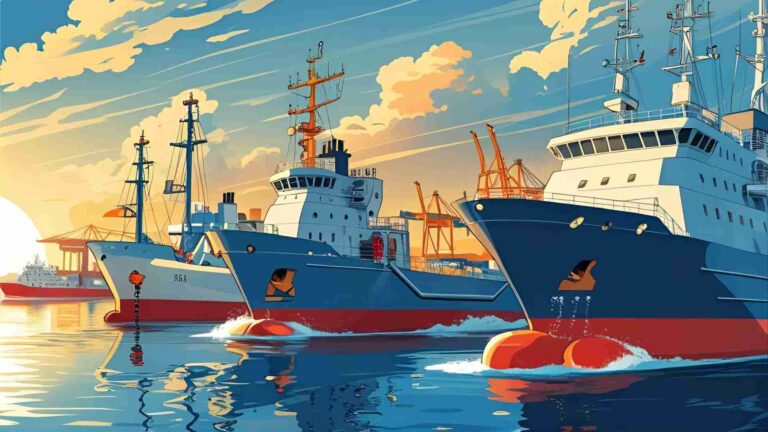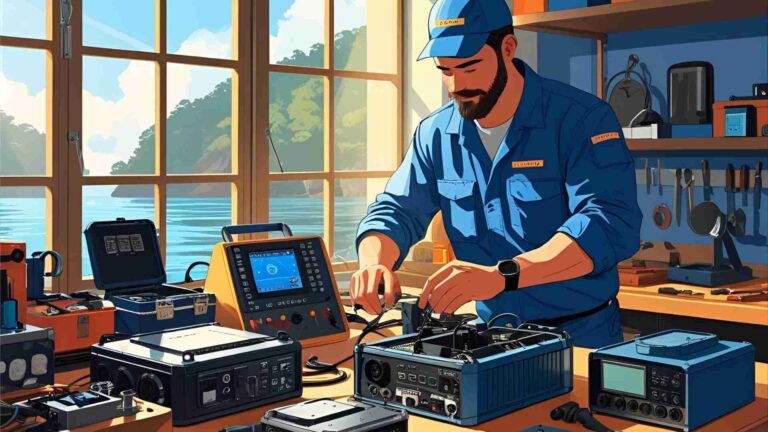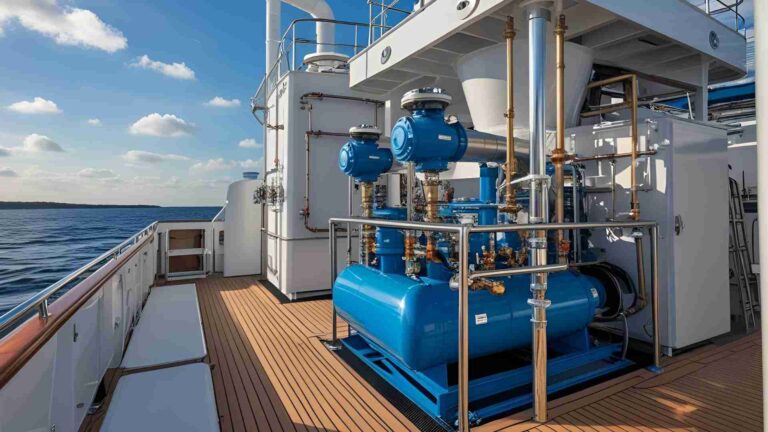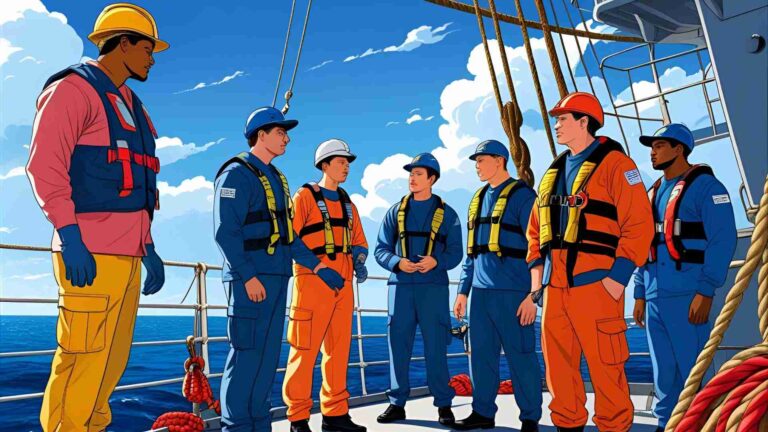Risk Assessment for Ships: A General Overview
Comprehensive guide to marine risk assessment for ships, covering hazard identification, risk analysis, control measures, and modern technologies for safety and compliance.
Marine operations are inherently complex and high-risk, with over 50,000 merchant ships transporting more than 80% of global trade across challenging environments. From navigational hazards to equipment failures, the maritime industry faces numerous threats that can lead to accidents, environmental damage, and financial losses. According to the Allianz Global Corporate & Specialty’s 2023 Safety and Shipping Review, over 3,000 shipping incidents occur annually, ranging from collisions to oil spills. Effective risk assessment is a cornerstone of maritime safety, enabling operators to identify, analyze, and mitigate risks proactively.
This article provides an in-depth exploration of risk assessment for ships, detailing its processes, importance, and integration with modern technologies. From hazard identification to regulatory compliance, we cover the critical components of a robust risk assessment framework, offering practical insights for ship owners, managers, and crew members. The discussion includes key methodologies, real-world examples, and best practices to foster a safety-first culture in maritime operations.
Understanding Risk Assessment in Maritime Operations
Risk assessment is a systematic process designed to identify potential hazards, evaluate their risks, and implement measures to minimize or eliminate them. It is a mandatory requirement under the International Safety Management (ISM) Code, which forms the backbone of a ship’s Safety Management System (SMS). The ISM Code emphasizes establishing safeguards against all identified risks, ensuring safety for crew, vessels, and the environment.
The International Maritime Organization (IMO) defines risk as the “combination of the frequency and the severity of the consequence.” This definition highlights two critical factors: the likelihood of a hazard occurring and the potential impact of its consequences. Risk assessment is not a one-time task but a continuous process that evolves with operational changes, new technologies, and regulatory updates.
Why Risk Assessment Matters
Risk assessment is vital for several reasons:
- Safety Enhancement: By identifying and addressing hazards, risk assessments protect crew members, passengers, and vessels from accidents and injuries.
- Regulatory Compliance: Compliance with international standards like the ISM Code, SOLAS, and MARPOL is mandatory, and risk assessments ensure adherence to these regulations.
- Environmental Protection: Proactive risk management minimizes environmental damage from incidents like oil spills or chemical leaks.
- Financial Savings: Preventing accidents reduces downtime, repair costs, and legal penalties, which can be significant, as seen in the $9.6 billion daily trade disruption caused by the MV Ever Given grounding in the Suez Canal.
Key Risks in Marine Operations
Maritime operations face a diverse range of risks, each requiring careful management to ensure safety and operational continuity. These risks can be broadly categorized into operational, environmental, safety, and regulatory hazards.
Common Hazards in Maritime Industries
Maritime operations involve complex systems and unpredictable conditions, leading to hazards such as:
- Human Error: The IMO estimates that up to 75% of maritime accidents are caused by human error, including miscommunication, fatigue, or inadequate training.
- Navigational Challenges: Congested shipping lanes, poor visibility, or uncharted obstacles can lead to collisions or groundings.
- Machinery Malfunctions: Poor maintenance contributes to 30% of mechanical failures, according to the UK Marine Accident Investigation Branch (MAIB).
- Cargo Issues: Improper storage or shifting cargo can cause fires, instability, or damage, with the International Union of Marine Insurance (IUMI) reporting a 25% rise in cargo fires due to unsafe storage.
- Fire Outbreaks: Fires onboard, often triggered by electrical faults or hazardous cargo, pose severe risks to crew and vessel safety.
Environmental Risks
Environmental hazards threaten marine ecosystems and coastal communities. Notable risks include:
- Oil Spills: The International Tanker Owners Pollution Federation (ITOPF) reports over 7,000 oil spill incidents since 1970. The 2023 Minerva Symphony oil spill off Singapore highlighted the devastating impact of such events.
- Extreme Weather: Climate change has intensified storms and sea conditions, increasing risks for vessels navigating rough waters.
- Marine Pollution: Improper waste management or chemical leaks can harm marine life and lead to regulatory penalties.
Safety Hazards
Crew safety is paramount, yet hazards like slips, trips, falls, and equipment-related injuries are common. The MAIB notes that 40% of crew injuries result from slips and falls, often due to wet decks or uneven surfaces. Other safety risks include:
- Chemical Exposure: Handling hazardous materials, such as on chemical tankers, can lead to burns or respiratory issues.
- Hypothermia: Cold weather exposure in harsh climates poses health risks for crew members working on deck.
- Falling Overboard: Open deck areas, especially during rough seas, increase the risk of crew members falling into the water.
Regulatory Non-Compliance
Failure to comply with international regulations like the ISM Code, SOLAS, or MARPOL can result in vessel detentions, fines, or operational suspensions. The Paris MoU reported over 3,000 ship detentions in a single year due to non-compliance, underscoring the need for robust risk management to meet regulatory standards.
The Marine Risk Assessment Process
A structured risk assessment process is essential for addressing these risks effectively. The process involves four key steps: hazard identification, risk analysis, control measures, and monitoring.
1. Hazard Identification (HAZID)
Hazard identification is the foundation of risk assessment. It involves recognizing anything that could cause harm to people, property, or the environment. For example, on a chemical tanker’s deck manifold, potential hazards include:
- Tripping on uneven grating
- Chemical burns from spills
- Falling overboard
- Hypothermia from cold weather exposure
HAZID is most effective when conducted by a diverse team, including crew members, officers, and shore-based management. Different perspectives ensure a comprehensive list of hazards. Techniques like safety walkabouts, checklists, and reviews of past incidents help uncover hidden risks.
2. Risk Analysis and Categorization
Once hazards are identified, they are analyzed based on two factors: likelihood and severity. This analysis helps prioritize risks and allocate resources effectively.
Likelihood Rating
Likelihood is rated on a scale, often converted to numerical values for objectivity:
| Rating | Description | Numerical Value |
|---|---|---|
| Very Unlikely | Less than 1% chance in a working lifetime | 1 |
| Unlikely | Occurs once in a working lifetime | 2–5 |
| Likely | Occurs once every five years | 6–9 |
| Very Likely | Occurs every six months or more | 10 |
Severity Rating
Severity is assessed based on the potential consequences, categorized as:
| Rating | Description | Examples |
|---|---|---|
| Slight Harm | Minor injuries, no lasting impact | Bruises, minor cuts |
| Moderate Harm | Injuries requiring medical attention | Fractures, burns |
| Extreme Harm | Life-threatening or fatal injuries | Falling from height, severe chemical burns |
Risk Calculation
Risk is calculated as the product of likelihood and severity:
Risk (R) = Probability (P) × Consequence (C)
For example, consider a crew member crossing a busy deck during cargo operations. The likelihood of tripping on uneven grating might be rated as “Likely” (7/10), and the severity, if it results in a fracture, could be “Moderate Harm” (5/10). The risk score is:
R = 7 × 5 = 35
This score is then checked against a risk matrix to determine if the risk is acceptable or requires mitigation.
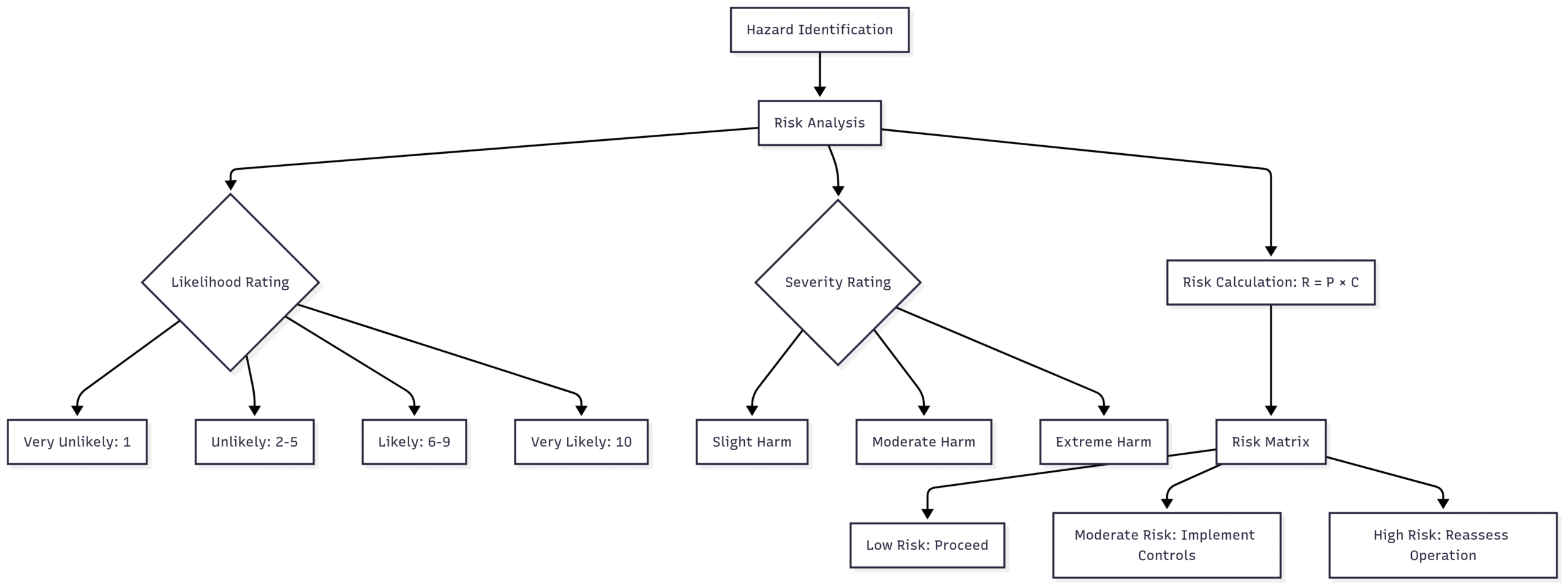
3. Implementing Risk Control Measures
Once risks are categorized, control measures are implemented to reduce them to an acceptable level, often guided by the ALARP (As Low As Reasonably Practicable) principle. Controls can be:
- Engineering Controls: Installing safety equipment like guardrails or alarms.
- Administrative Controls: Developing safe work procedures or conducting training.
- Personal Protective Equipment (PPE): Providing helmets, gloves, or life jackets.
For example, to mitigate the risk of chemical burns on a tanker, operators might install spill containment systems (engineering), enforce strict handling protocols (administrative), and provide chemical-resistant suits (PPE).
4. Monitoring and Reviewing
Risk management is an ongoing process. Regular audits, incident reviews, and feedback loops ensure control measures remain effective. New risks, such as cyberattacks or changing weather patterns, require periodic updates to the risk assessment. The IMO reports that vessels with regular safety protocol reviews see a 30% reduction in onboard accidents.
The Role of Risk Assessment in Maritime Safety
Risk assessment is integral to maritime safety, offering multiple benefits:
Identifying Threats Early
Proactive hazard identification prevents incidents before they escalate. For example, the UK MAIB reported cases where timely radar system checks and visibility assessments avoided collisions in congested waters.
Preventing Human Error
Structured assessments, including pre-departure checklists and scenario-based drills, address human error, which accounts for 75% of maritime accidents. The 2021 MV Ever Given grounding highlighted the consequences of inadequate risk planning, emphasizing the need for robust assessments.
Reducing Financial Losses
Effective risk management minimizes costly disruptions. The UK P&I Club found that companies with proactive risk frameworks reduced claims and downtime by 25% over three years.
Technologies Enhancing Marine Risk Assessments
Modern technologies are revolutionizing risk assessment, making it more precise and efficient.
AI-Powered Tools
Artificial Intelligence analyzes vast datasets to predict hazards, optimize routes, and support real-time decision-making. AI reduces human error by identifying patterns that might be overlooked by manual assessments.
Digital Twin Technology
Digital twins create virtual ship models, allowing operators to simulate scenarios like equipment failures or storms. These simulations help identify vulnerabilities without risking crew or assets.
IoT for Predictive Monitoring
Internet of Things (IoT) sensors monitor machinery and environmental conditions, detecting anomalies like temperature spikes or vibrations. Predictive analytics enable preemptive maintenance, reducing failure rates.
Data-Driven Outcomes
Combining AI, digital twins, and IoT, data-driven risk assessments improve safety and efficiency. Industry reports indicate that vessels using smart technologies experience fewer accidents and less downtime.
Compliance and Regulatory Aspects
Compliance with international regulations is a critical aspect of risk assessment.
Alignment with Maritime Conventions
Risk assessments ensure adherence to standards like the ISM Code, SOLAS, MARPOL, and ILO regulations. These frameworks mandate safety procedures, pollution prevention, and crew welfare protocols.
Avoiding Penalties
Proactive risk management prevents fines and detentions. The Paris MoU’s detention statistics highlight the importance of staying audit-ready through continuous risk evaluations.
Continuous Risk Audits
Regular audits identify procedural gaps and ensure compliance with evolving regulations. They also prepare vessels for Port State Control inspections, minimizing operational interruptions.
Best Practices for Fleet Operations
Embedding risk assessment into daily operations fosters a safety-first culture. Key practices include:
Integrating Risk Assessments into Workflows
Risk evaluations should be part of routine tasks like voyage planning, cargo handling, and maintenance checks. This ensures consistent hazard awareness across operations.
Training Crew on Risk Mitigation
Well-trained crews reduce incident rates by up to 70%, according to the IMO. Training should cover hazard recognition, emergency procedures, and equipment handling.
Regular Audits and Feedback
Feedback from past voyages and drills improves future risk management. Regular audits track changes and reinforce accountability, ensuring assessments remain effective.
Risk Assessment Form Components
A typical risk assessment form includes:
| Component | Description |
|---|---|
| Ship Name & Assessment Number | Unique identifiers for the vessel and assessment. |
| Activity Assessed | Specific task or operation (e.g., cargo loading, deck maintenance). |
| Potential Hazards | List of identified risks (e.g., slips, chemical exposure). |
| Risk Evaluation | Likelihood and severity ratings for each hazard. |
| Control Measures | Engineering, administrative, or PPE solutions to mitigate risks. |
| Personnel Involved | Names of crew and management participating in the assessment. |
| Methodology | Tools or techniques used (e.g., checklists, FMEA). |
| Validity Period | Timeframe for which the assessment is valid. |
| Review Information | Details on when and how the assessment will be updated. |
Future Outlook in Marine Risk Assessment
The maritime industry is embracing digital transformation to enhance risk assessment. Predictive analytics will leverage real-time data to alert crews to risks before they escalate. Automation, including digital reporting and automated inspections, will reduce human error and improve monitoring accuracy. These advancements promise more proactive, efficient, and reliable risk management.
Conclusion
Risk assessment is a vital tool for ensuring safety, compliance, and efficiency in maritime operations. By systematically identifying hazards, analyzing risks, and implementing controls, ship operators can prevent accidents, protect the environment, and avoid costly disruptions. The integration of technologies like AI, digital twins, and IoT is transforming risk management, enabling data-driven decisions and real-time monitoring.
For ship owners and managers, adopting robust risk assessment practices is not just a regulatory requirement but a strategic necessity. Tools like Shipmate’s ship management system offer digital risk assessments, compliance tracking, and intelligent monitoring, empowering operators to maintain safe and sustainable operations. To explore these solutions, connect with Shipmate for a personalized demo and elevate your fleet’s safety standards.
Happy Boating!
Share Risk Assessment for Ships: A General Overview with your friends and leave a comment below with your thoughts.
Read 2016 Caravelle Boat Group Razor Series 238 PF Review until we meet in the next article.

